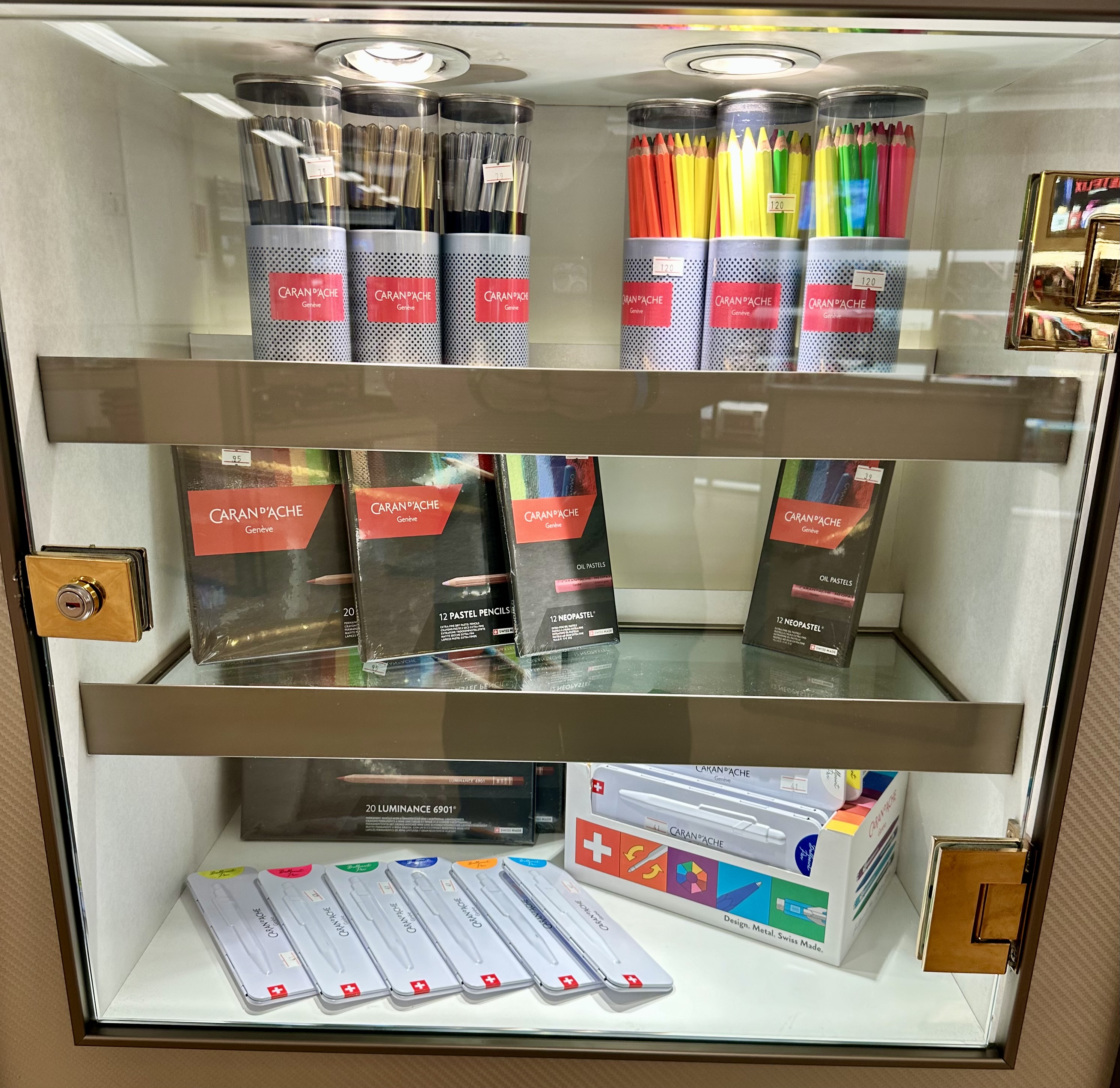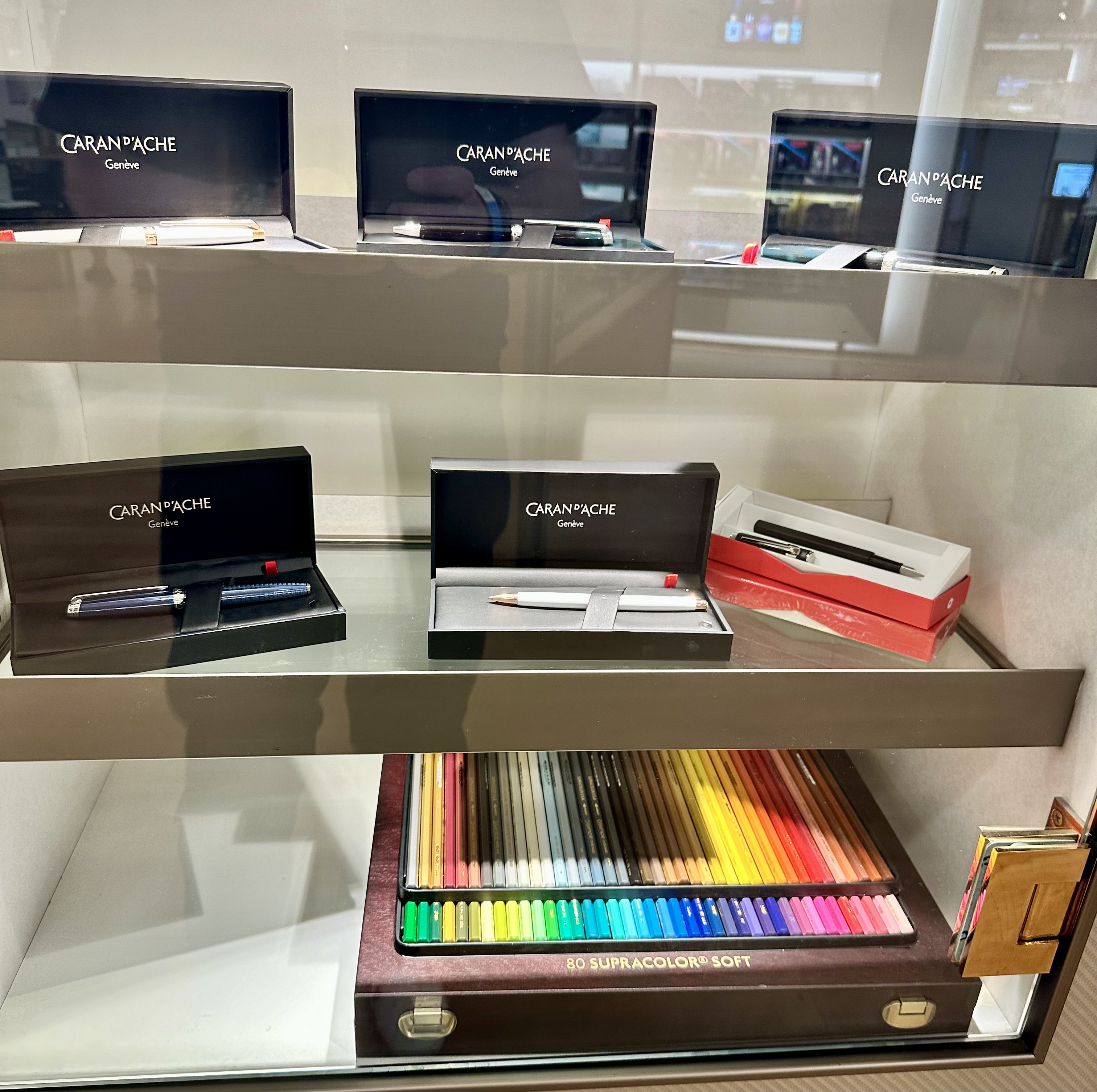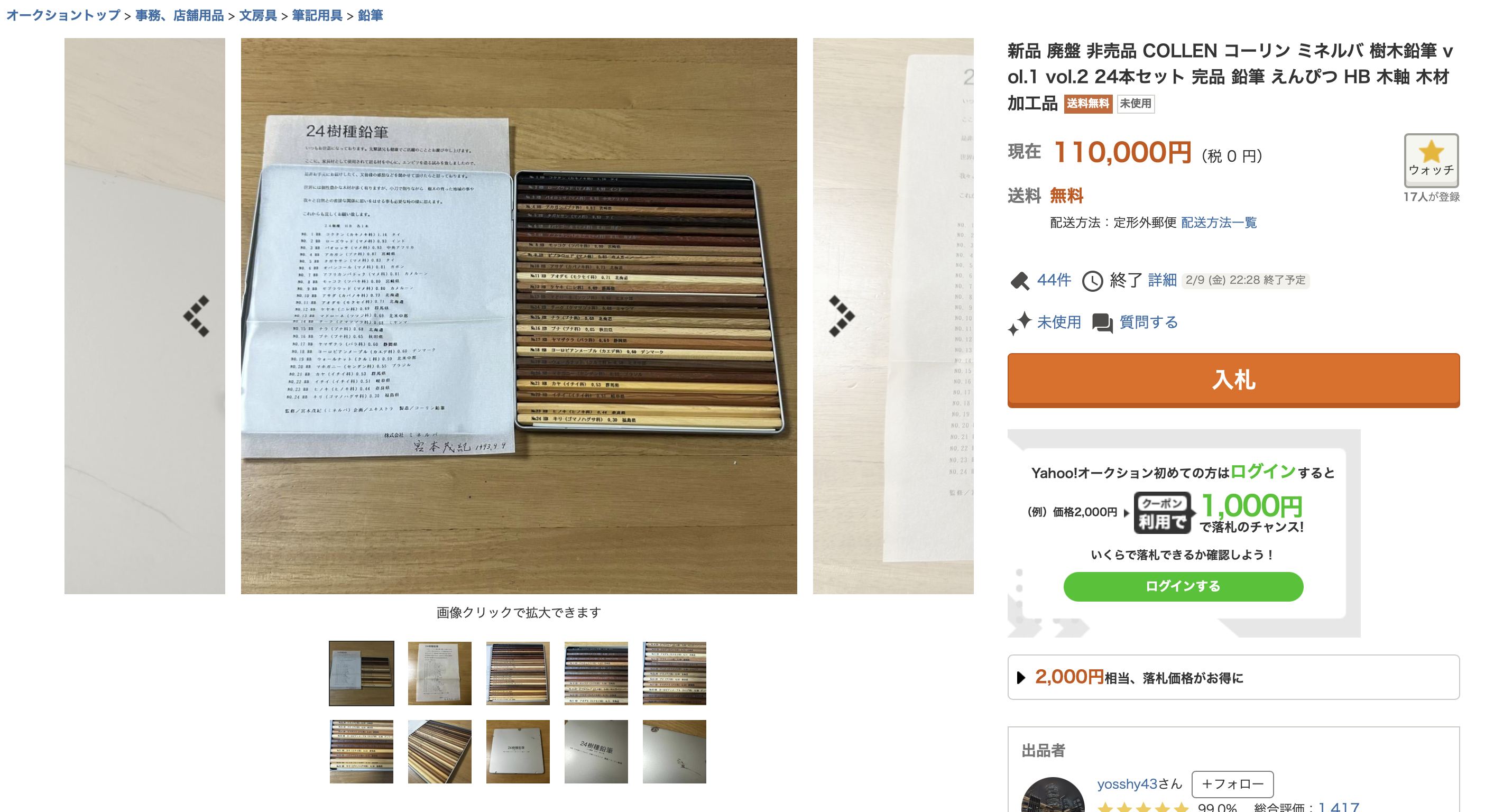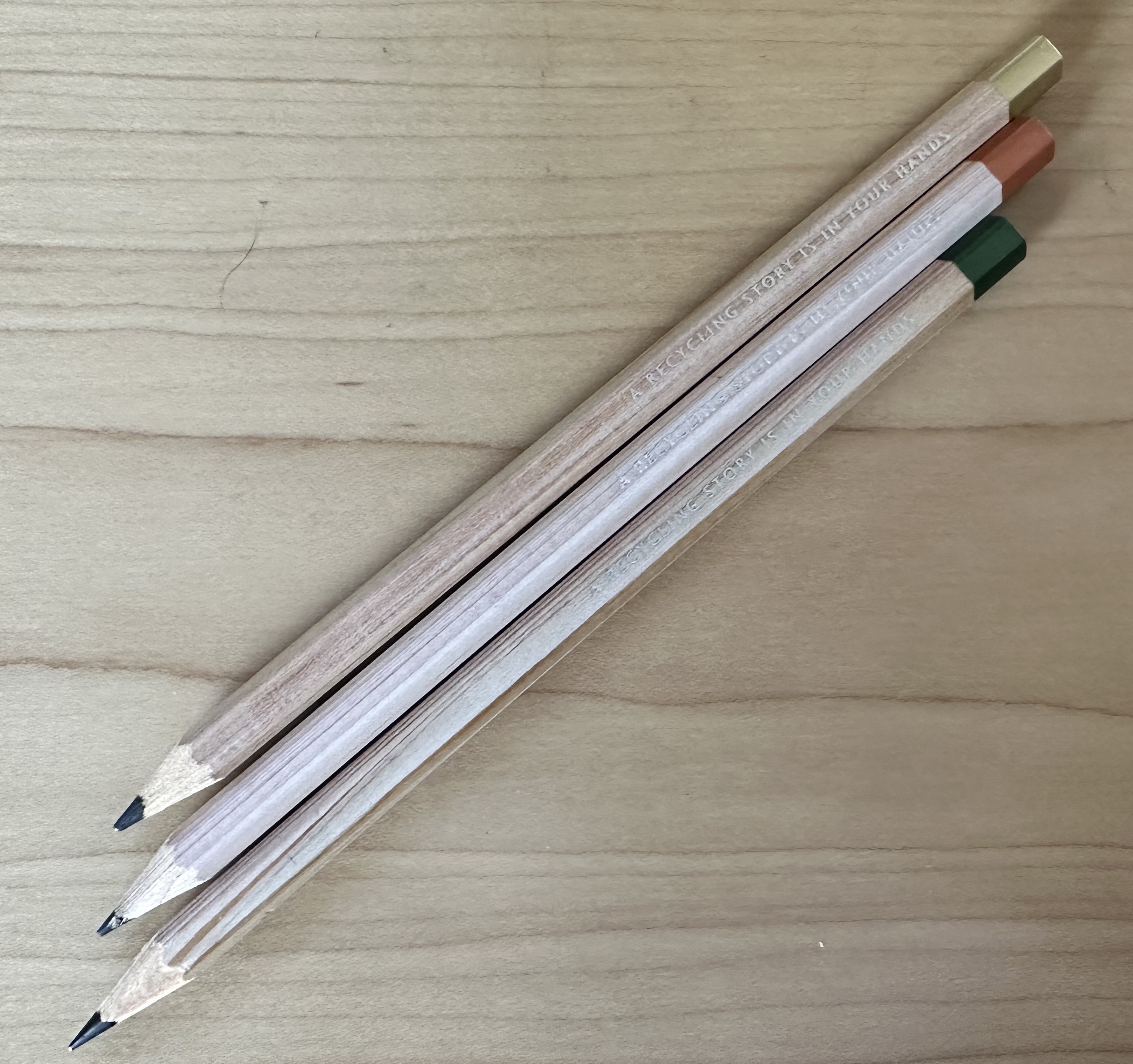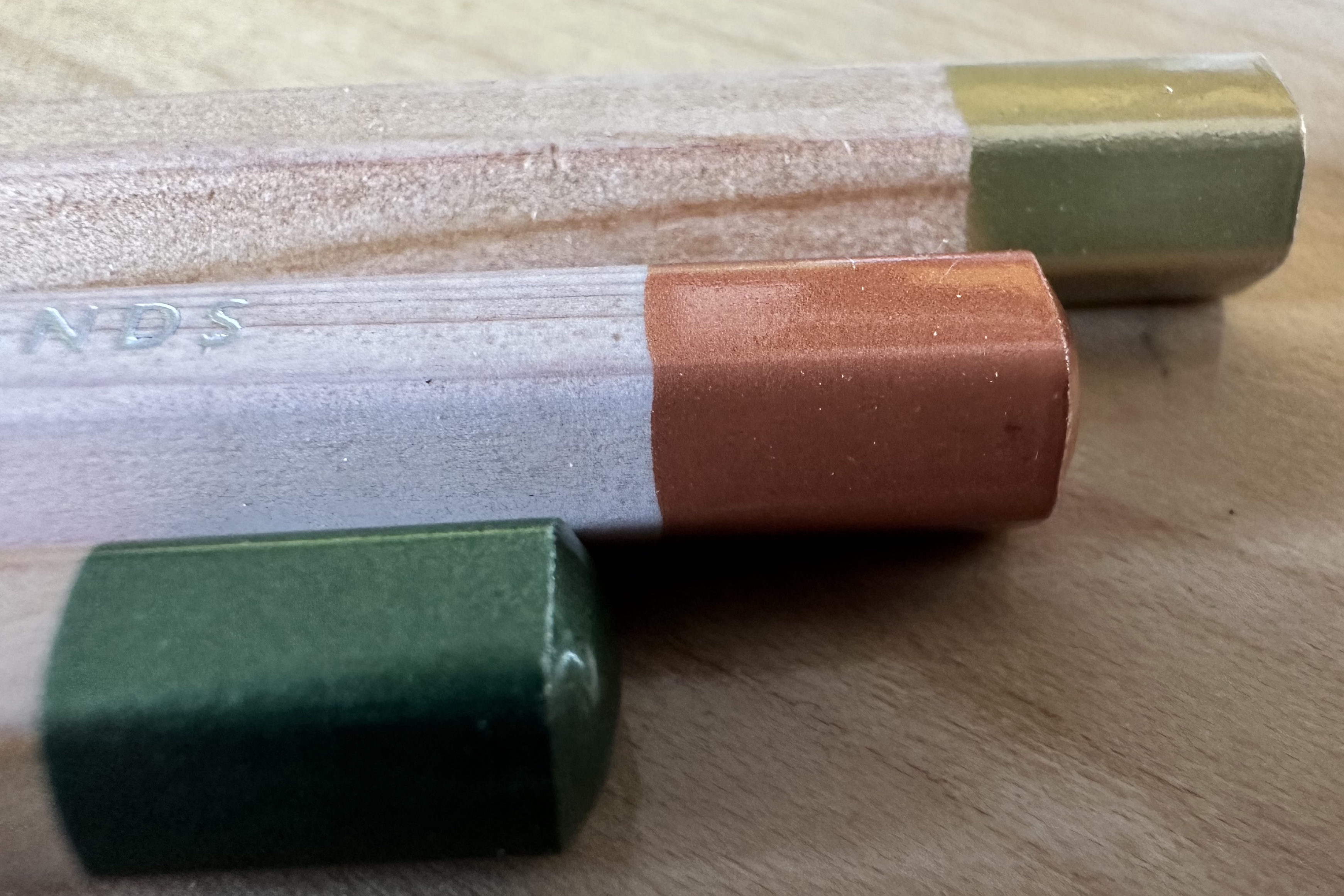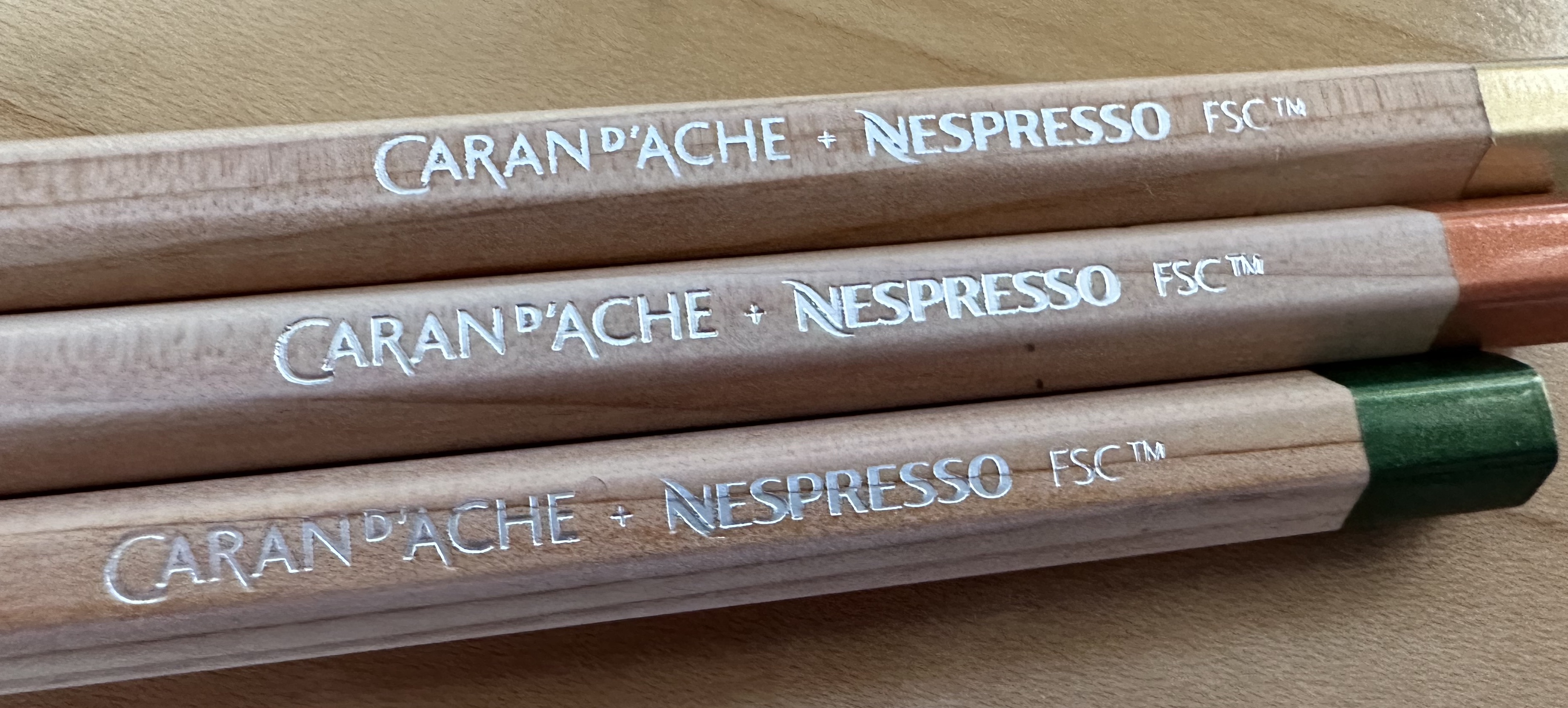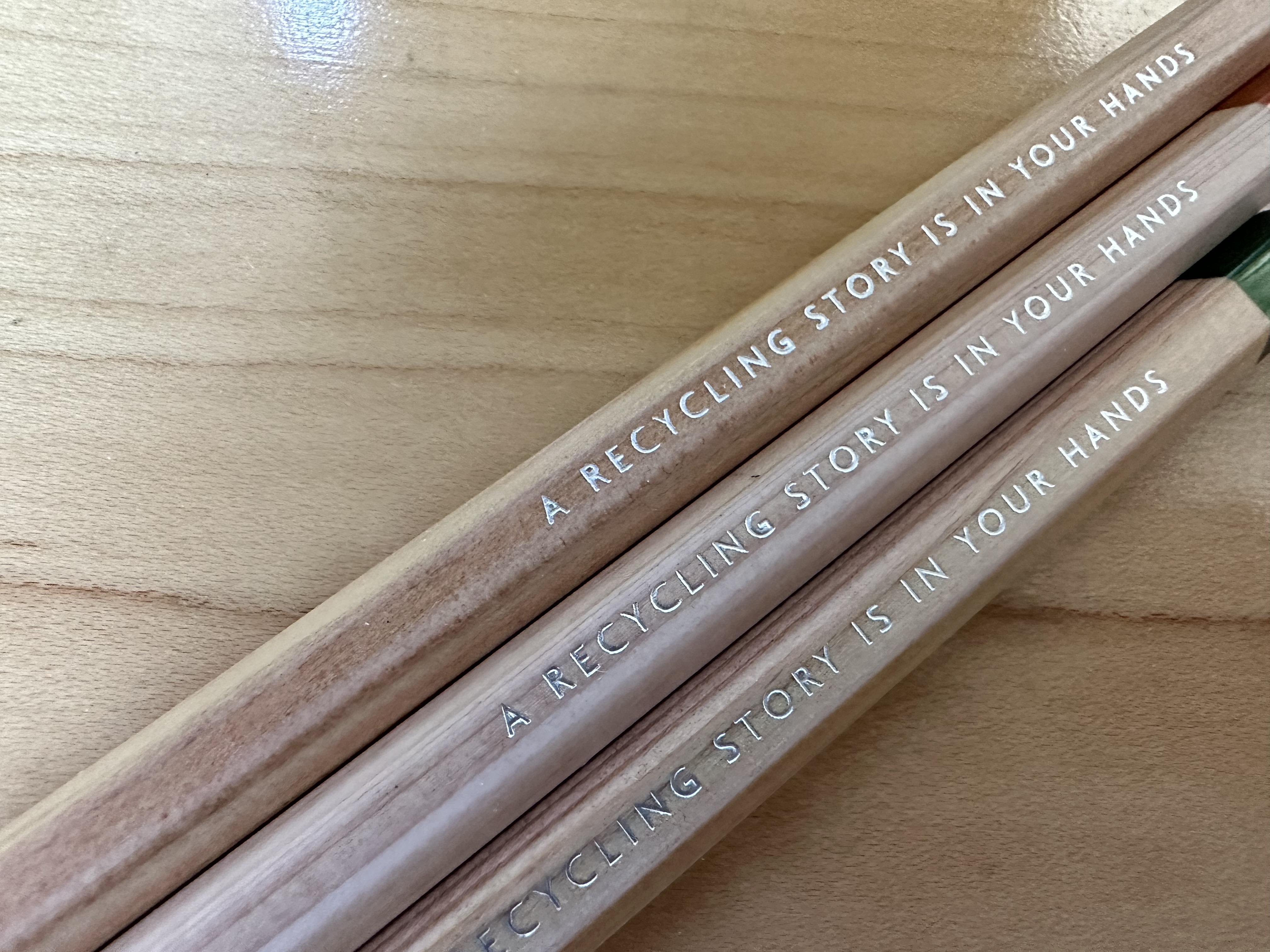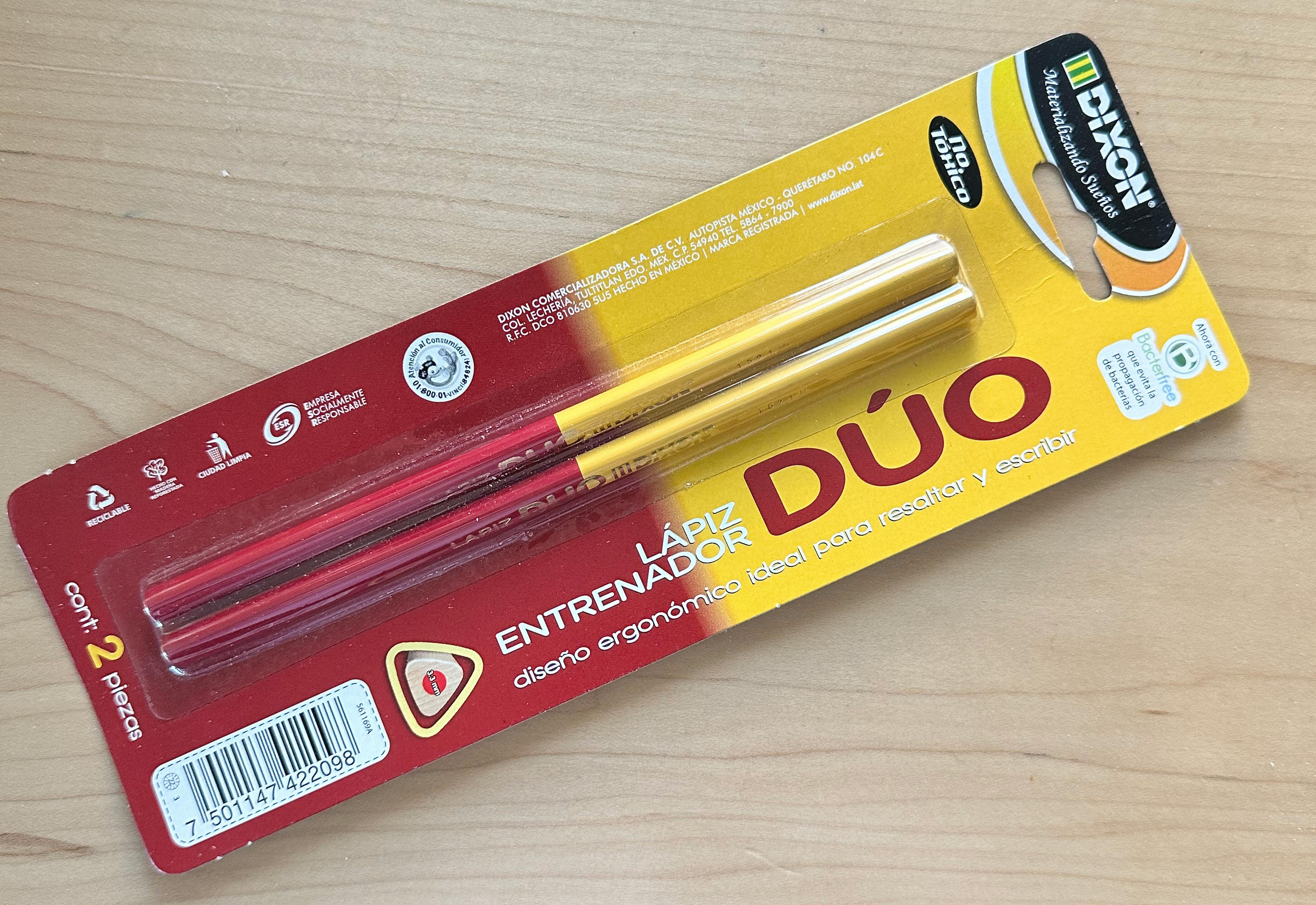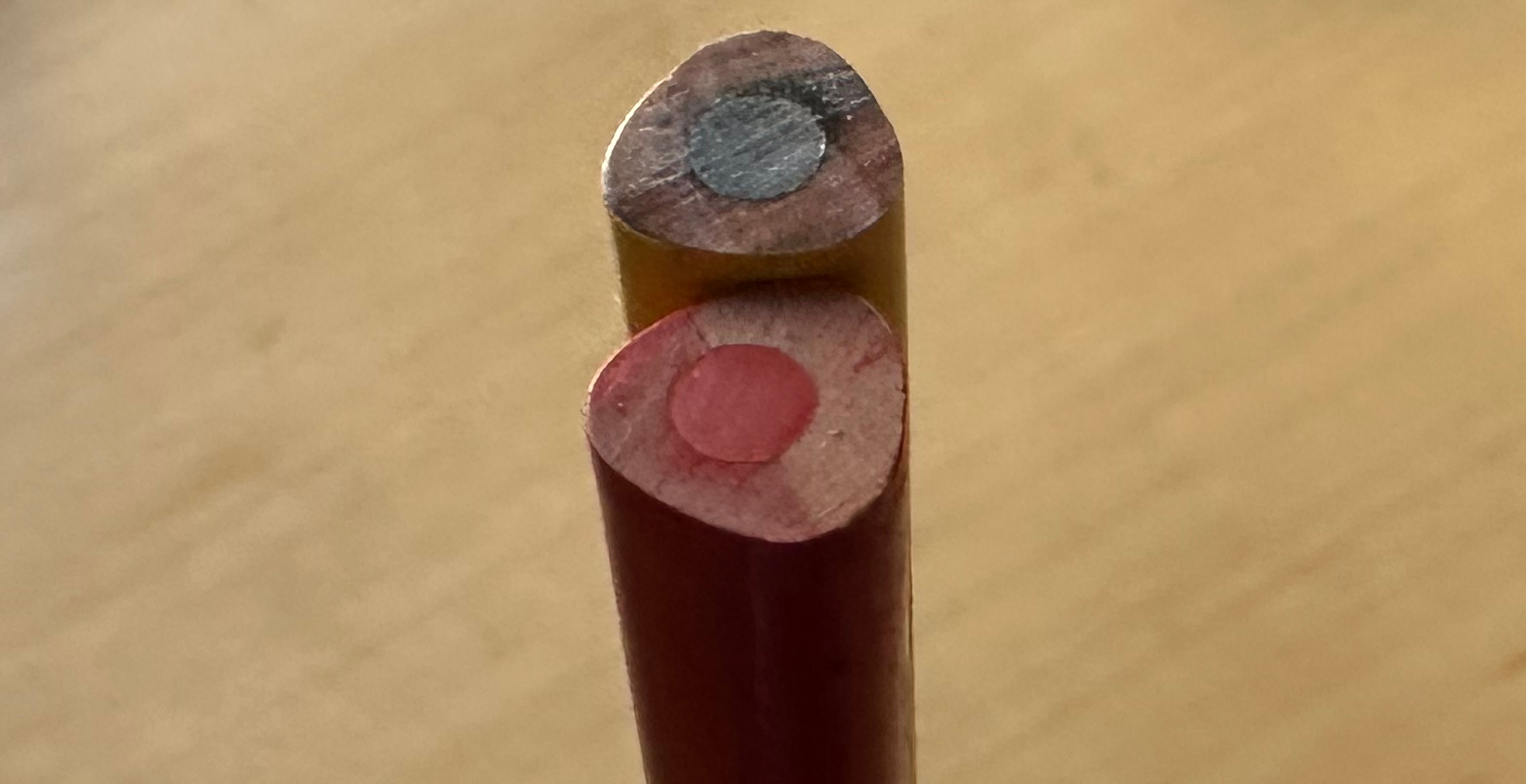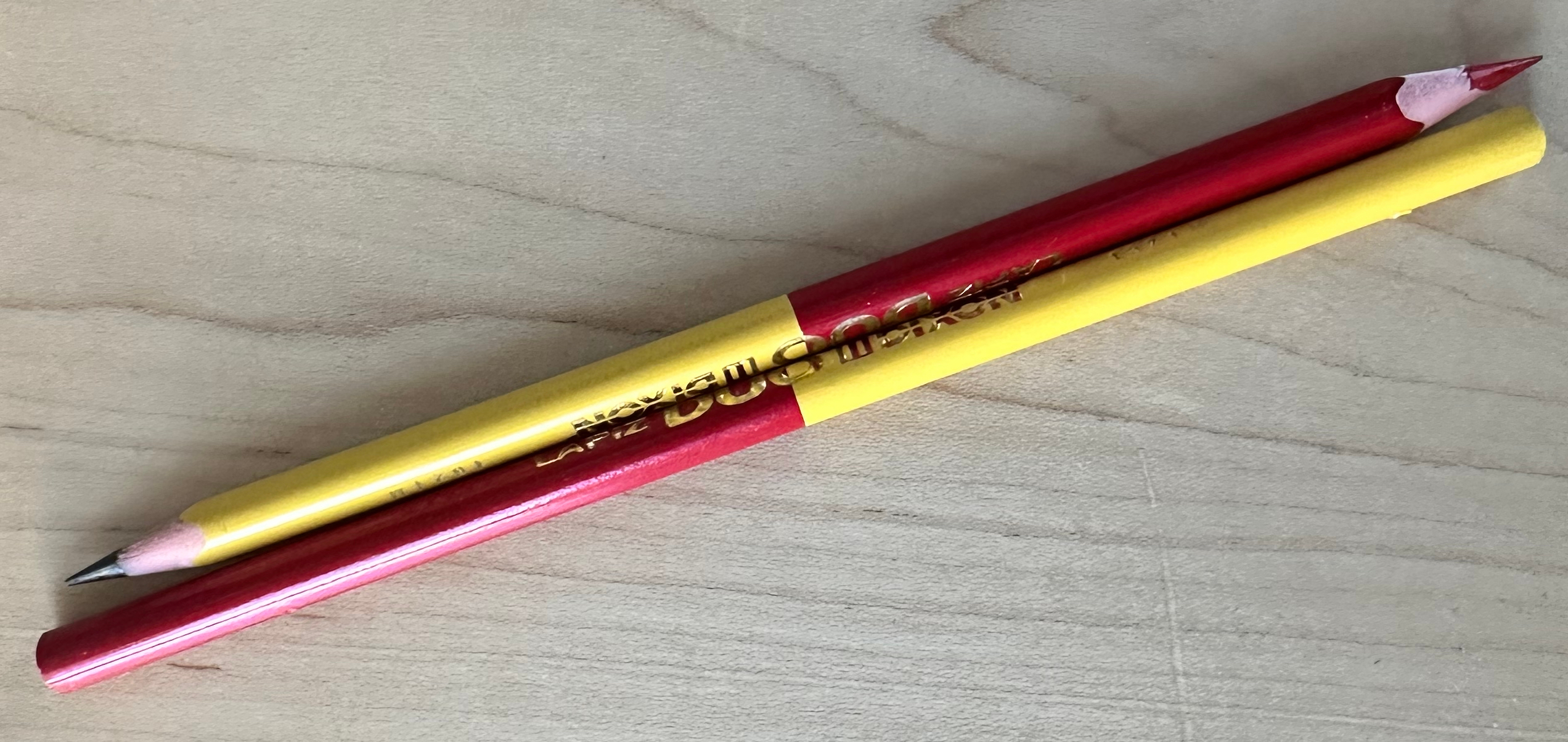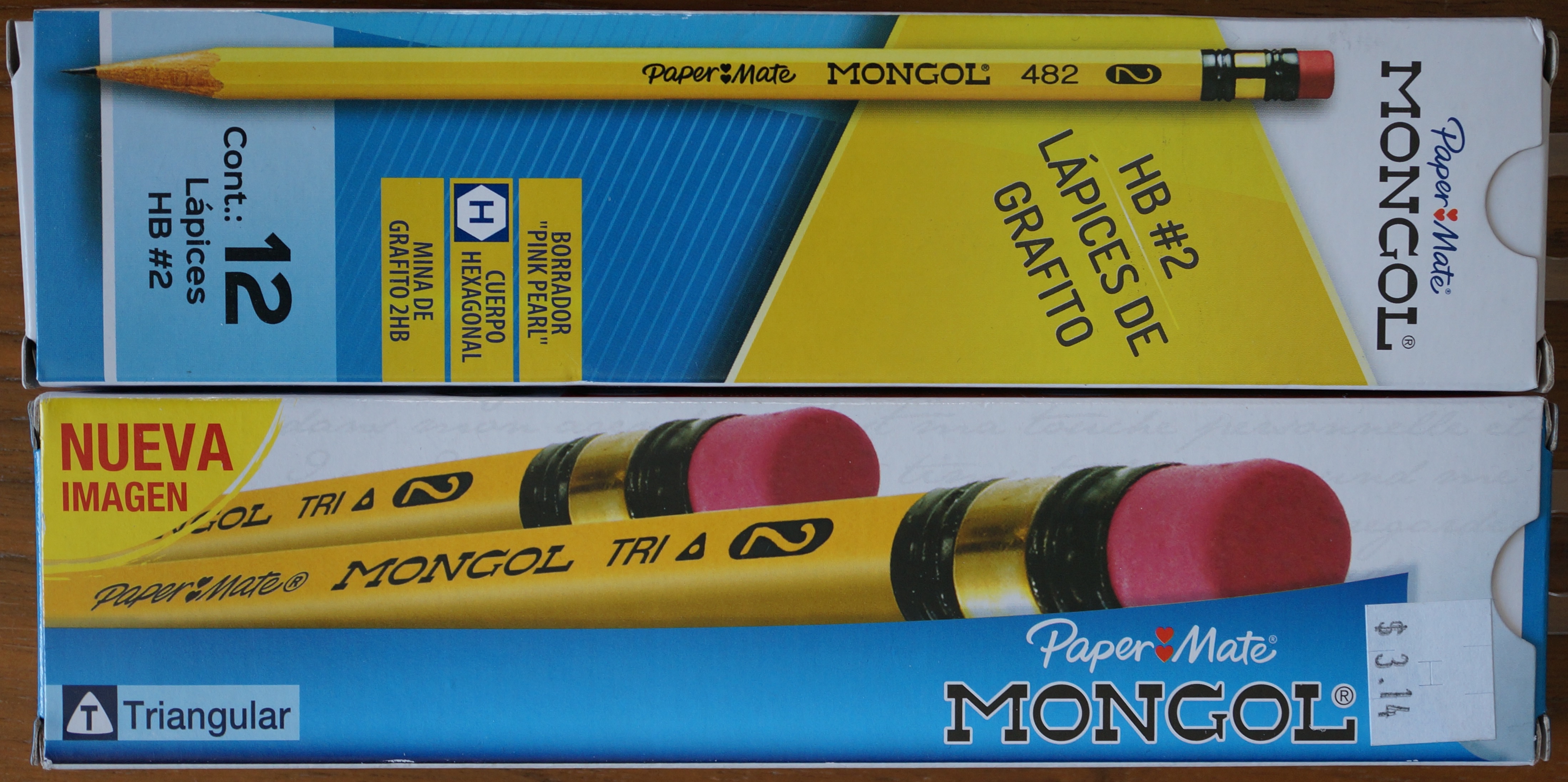
A recent post mentioned finding new Mongol branded pencils at retailers in Panama. There are some surprises regarding these pencils. They were made in both China and Vietnam for PaperMate/Newell Rubbermaid, and exported to Latin America. Let’s take a look at them.
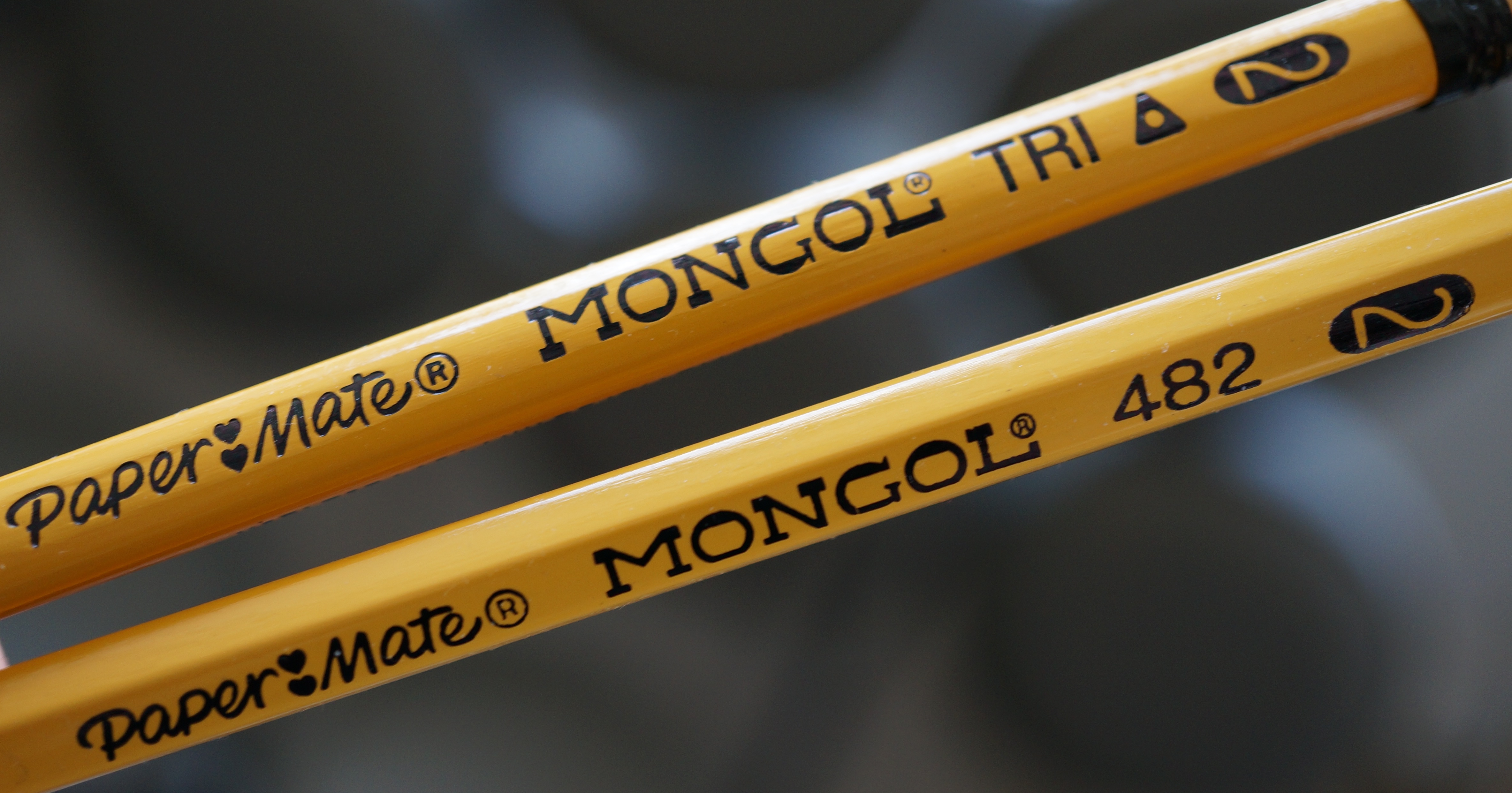
My first surprise is that the hexagonal pencil is made in China and the triangular pencil in Vietnam. I can speculate, but don’t really know why. The pencil packaging uses a majuscule H to indicate the hexagonal pencil and a T for the triangular pencil, but I found this confusing as H is also a pencil grade.
They definitely have the Mongol look with that copper coloured ferrule. The modern “PaperMate” name seems unexpected, but it’s an enduring brand name. Imprecise ferrule fixation (“tipping” in Tennessee parlance) has left some wood splinters sticking out and the pencil looking messy.
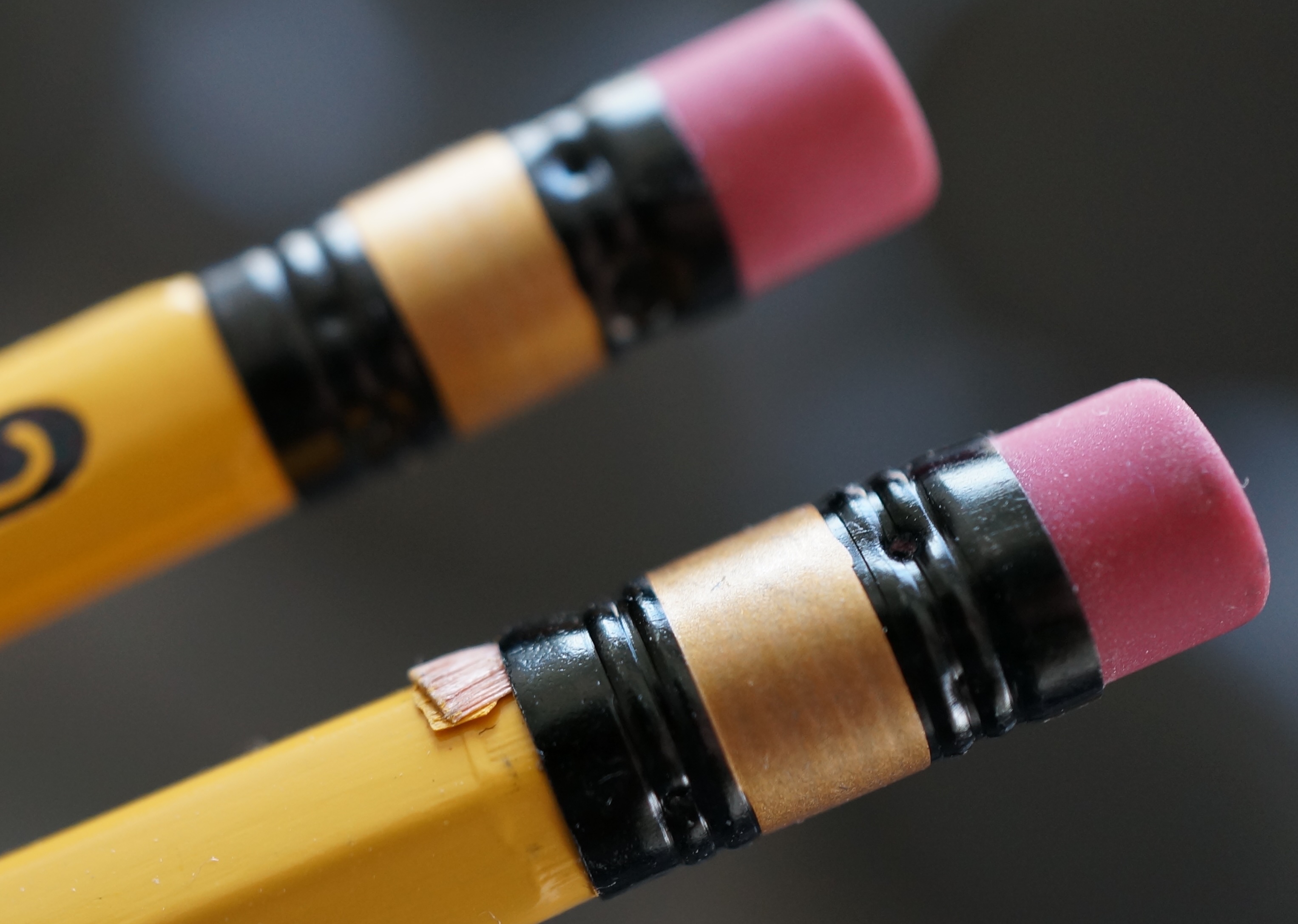
The writing and sharpening – for 26 cent brand name pencils – seem good to me. Not the summit of pencil making, but still completely fine.

And Newell Rubbermaid cancelled the Mongol trademark in the US in 2021, so there is a question about just what these pencils are. Mongol was and remains a global pencil brand, so I presume an ongoing demand for this brand was fulfilled through the corporate hierarchy.
Mongol pencils of course have been seen in Colombia, Venezuela, and particularly the Philipines, a country which has placed a Mongol pencil on a stamp. In fact I recall the former online store PencilThings offered imported Philippine Mongols. You can see that they are still very popular.

